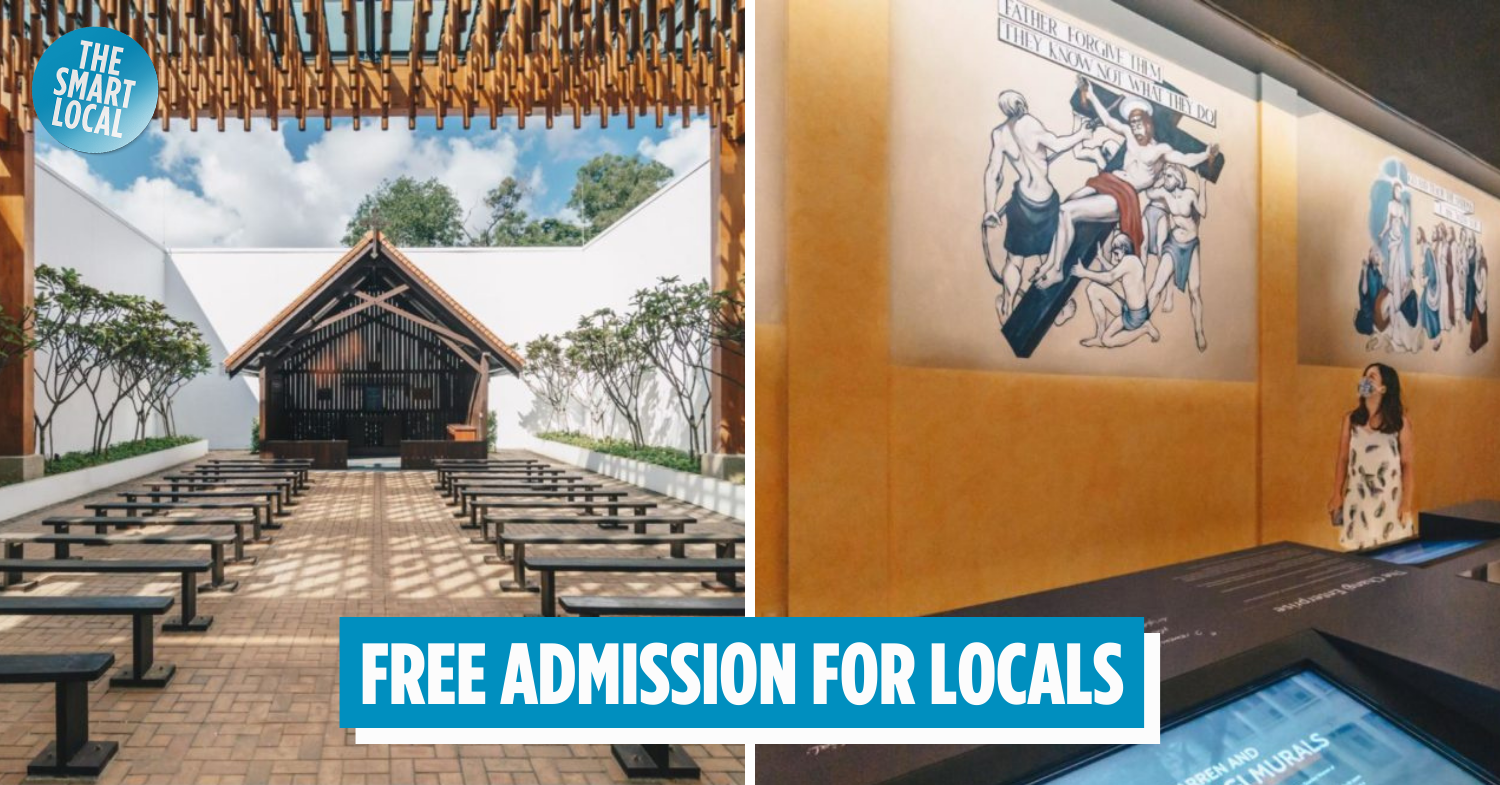Changi Chapel & Museum
You might recall reading about the Japanese Occupation in your history textbooks, but not many Singaporeans are aware of a gem tucked away at the end of Upper Changi Road, where an understated white building pays tribute to a resilient spirit in those dark days.
That’s Changi Chapel & Museum, and its whitewashed facade belies the colourful stories of prisoners of war and civilians in Changi prison camp during WWII. Here’s what you can find at this museum:
Immersive sets like a prison cell & replicas of murals
The museum spared no time in teleporting us to the past, with our first steps into the 8 galleries detailing Changi’s rich history as a mangrove swamp, rainforest, and even barracks.
No flipping through of textbooks here, as even a history noob like me was intrigued by the immersive videos and panels all round.
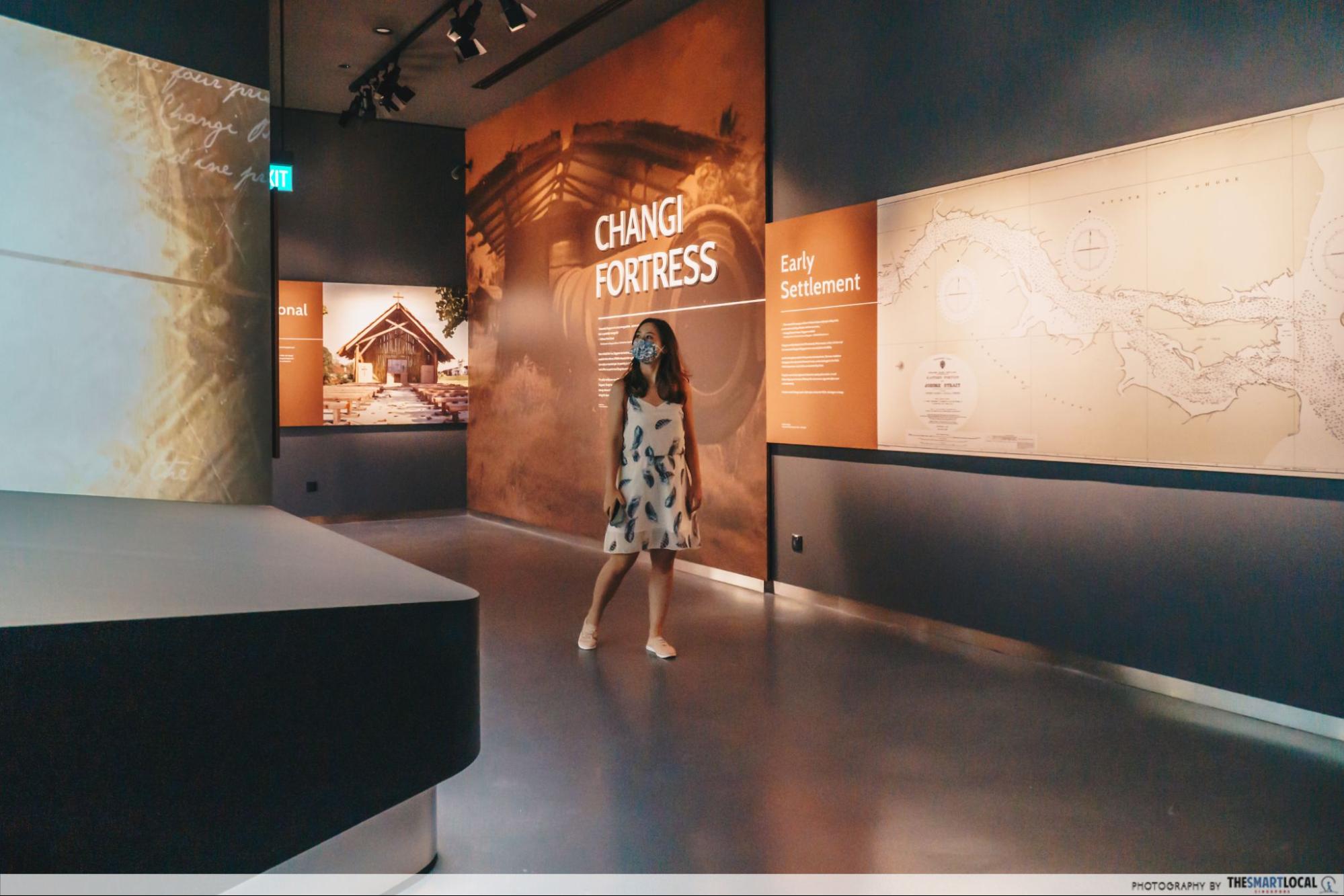
We witnessed the monumental Fall of Singapore during the Japanese Occupation, as well as the turning point when soldiers and civilians alike were marched to Changi Prison Camp.
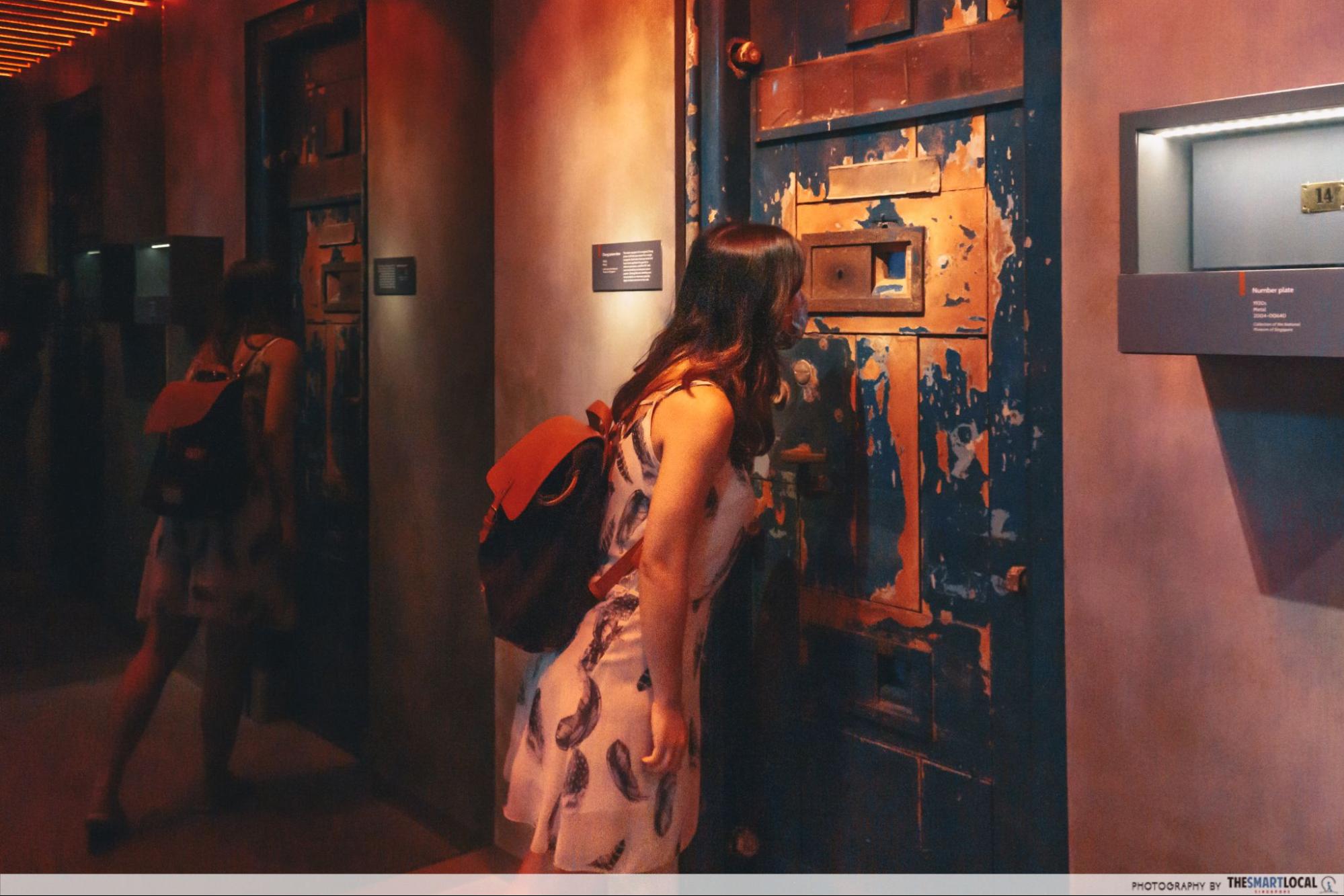 A closer look at this prison door from the 1930s. Tip: Face the mirror at the side so it looks like the whole series of doors, giving you the illusion of a prison corridor.
A closer look at this prison door from the 1930s. Tip: Face the mirror at the side so it looks like the whole series of doors, giving you the illusion of a prison corridor.
Prison conditions then were undesirable, to say the least. With overcrowding of over 5,000 people housed in a place built for 600, to say they were packed in like sardines is an understatement.
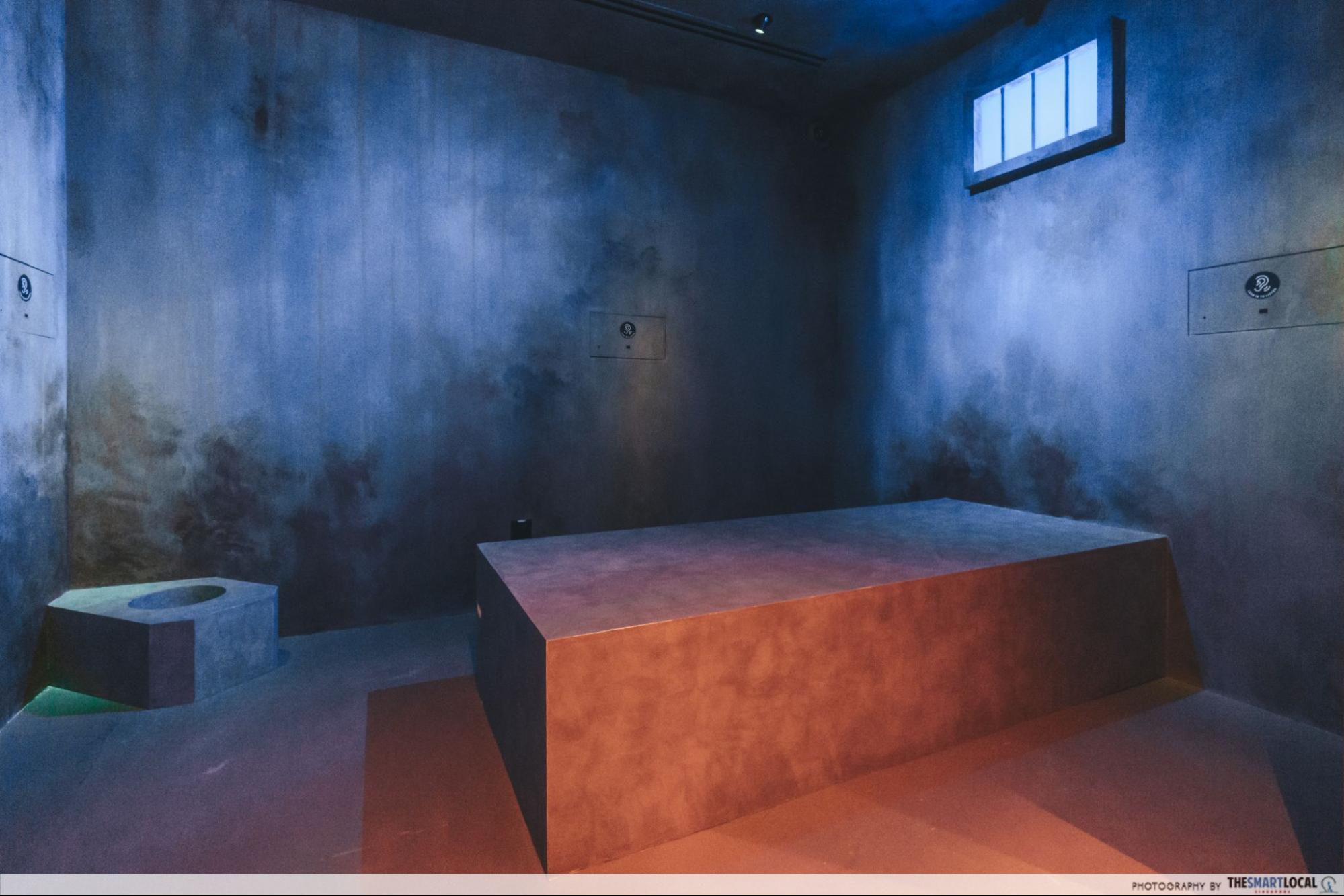
We got up close to a recreated Changi Gaol cell, where prisoners slept on concrete beds and had to share an already miniscule room with 3 others.
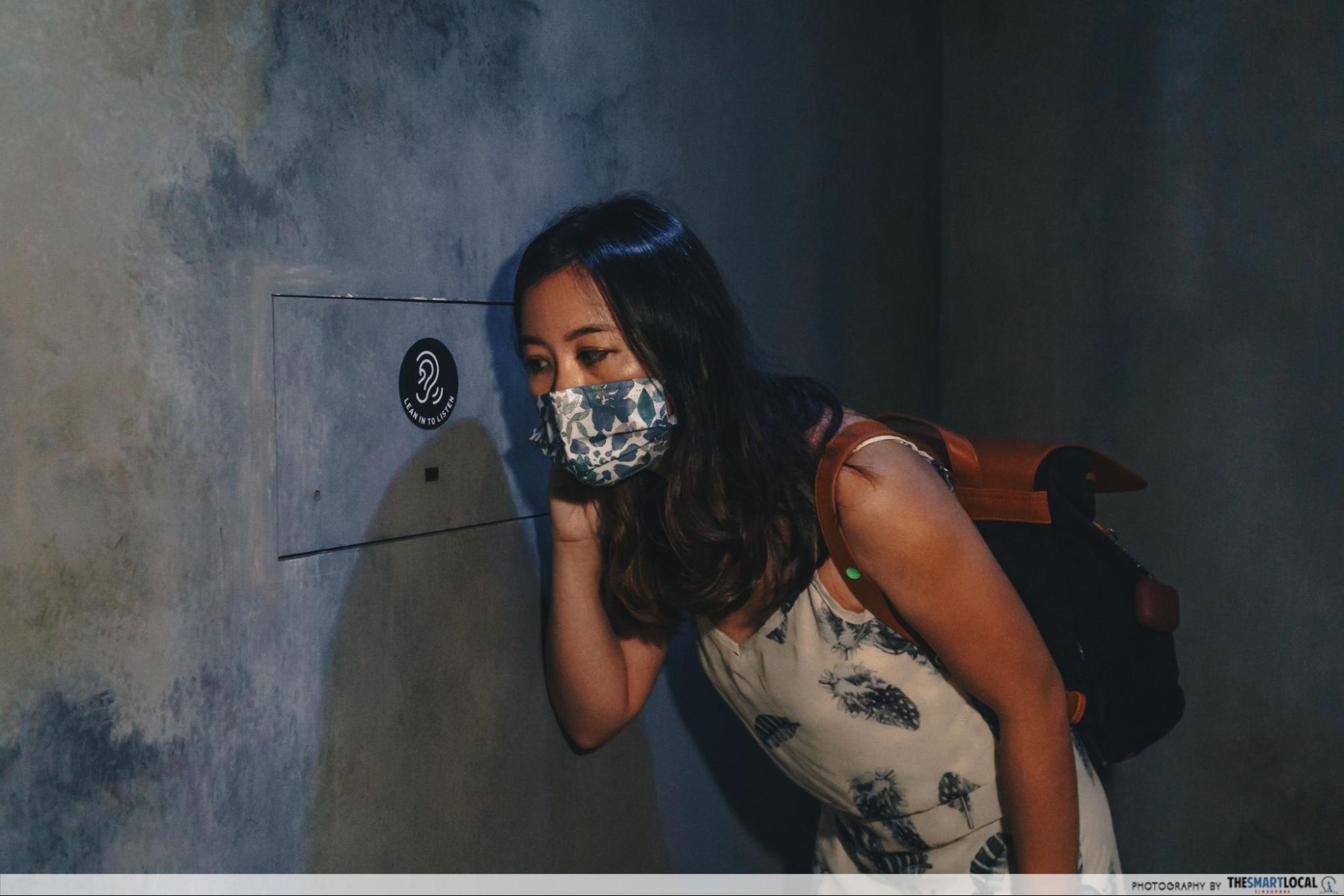
For a better idea of what it was like to be imprisoned, “eavesdrop” on stories of prisoner conversations based on oral interviews, which switch up depending on the time you visit.
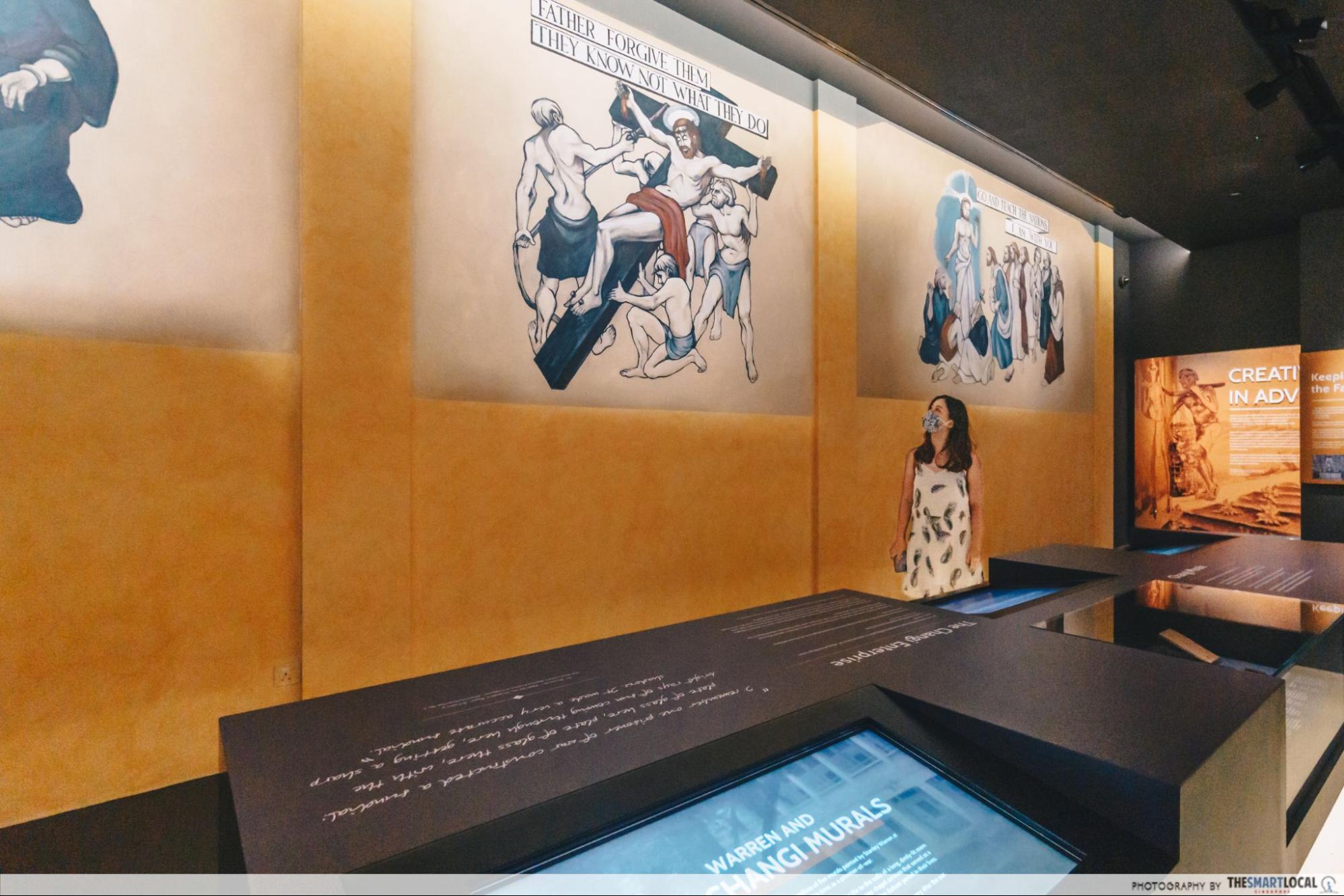
As we weaved through the exhibits, another stand-out was a room with replicas of biblical murals, which were painted to give prisoners spiritual comfort. Murals were painted by Bombardier Stanley Warren, who used everything from crushed chalk to brushes made with human hair.
Houses artefacts like a 400-page-diary, Kodak camera & toothbrush
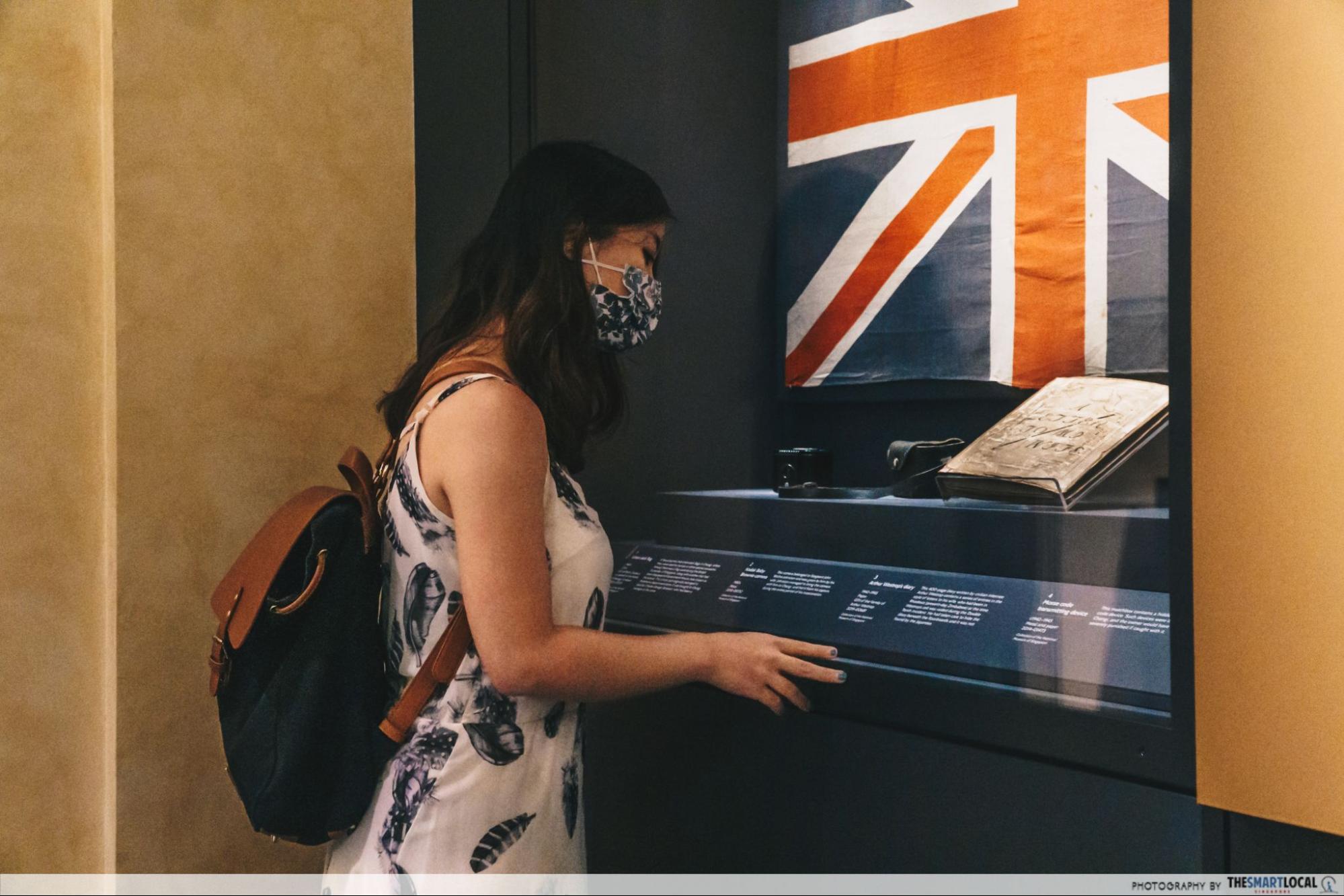
The museum also has over 82 artefacts made up of stories and personal objects that are on display which were sourced from families and former prisoners by the National Museum of Singapore. These donations make up almost 1/3 of those on display as well.
For instance, we saw a 400-page diary which had daily entries from a prisoner writing every entry to his wife in Africa. There’s even a Kodak Baby Brownie camera, and we were intrigued by how these items weren’t confiscated by captors.
The secret: hiding them under floorboards.
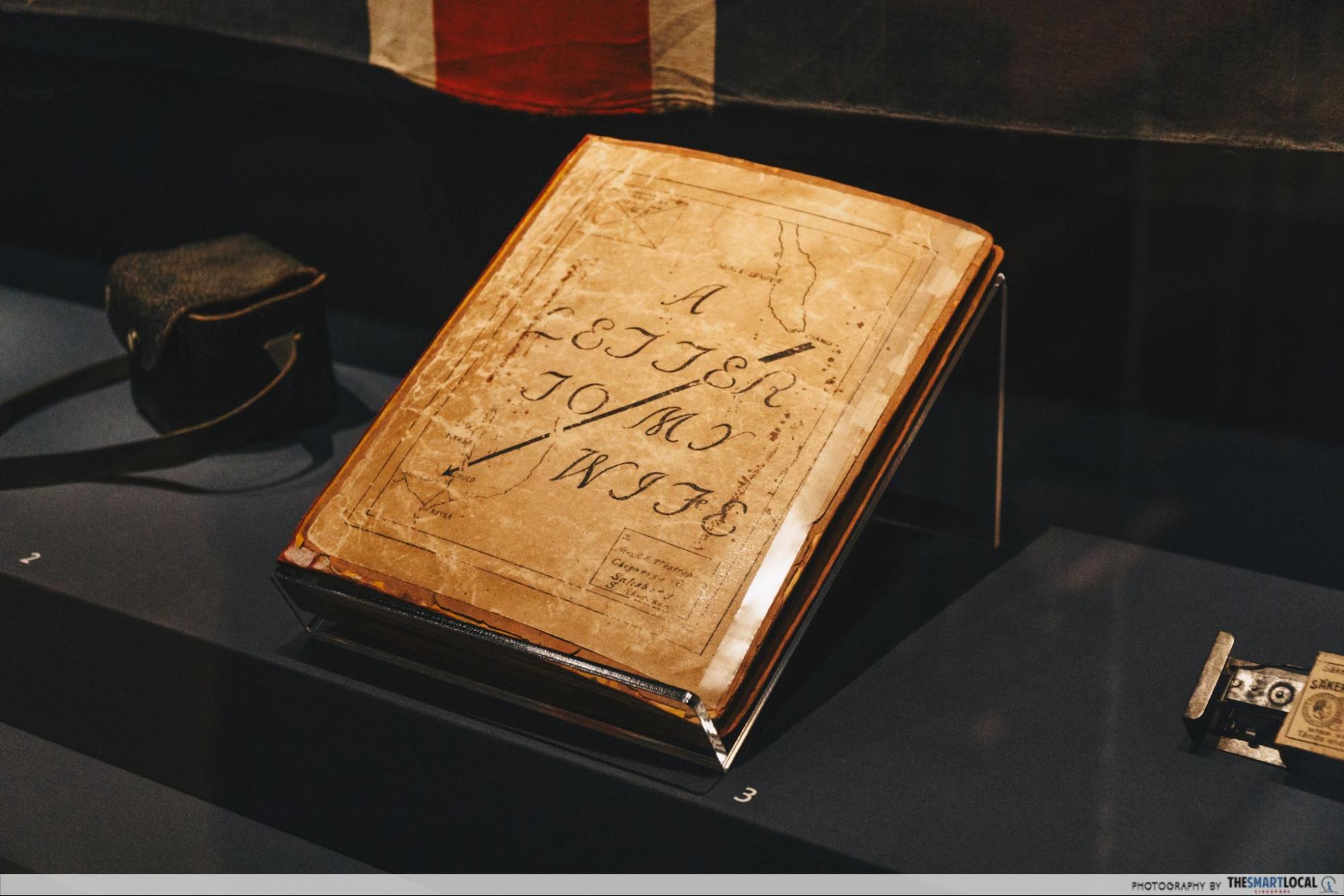
Other artefacts spoke to the inventive and creative spirit of the internees at the camp.
For example, it was hard to get everyday things, so they had their own internal “factories”, making objects like soap, pots and pans, toothbrushes, razors, and even artificial limbs.
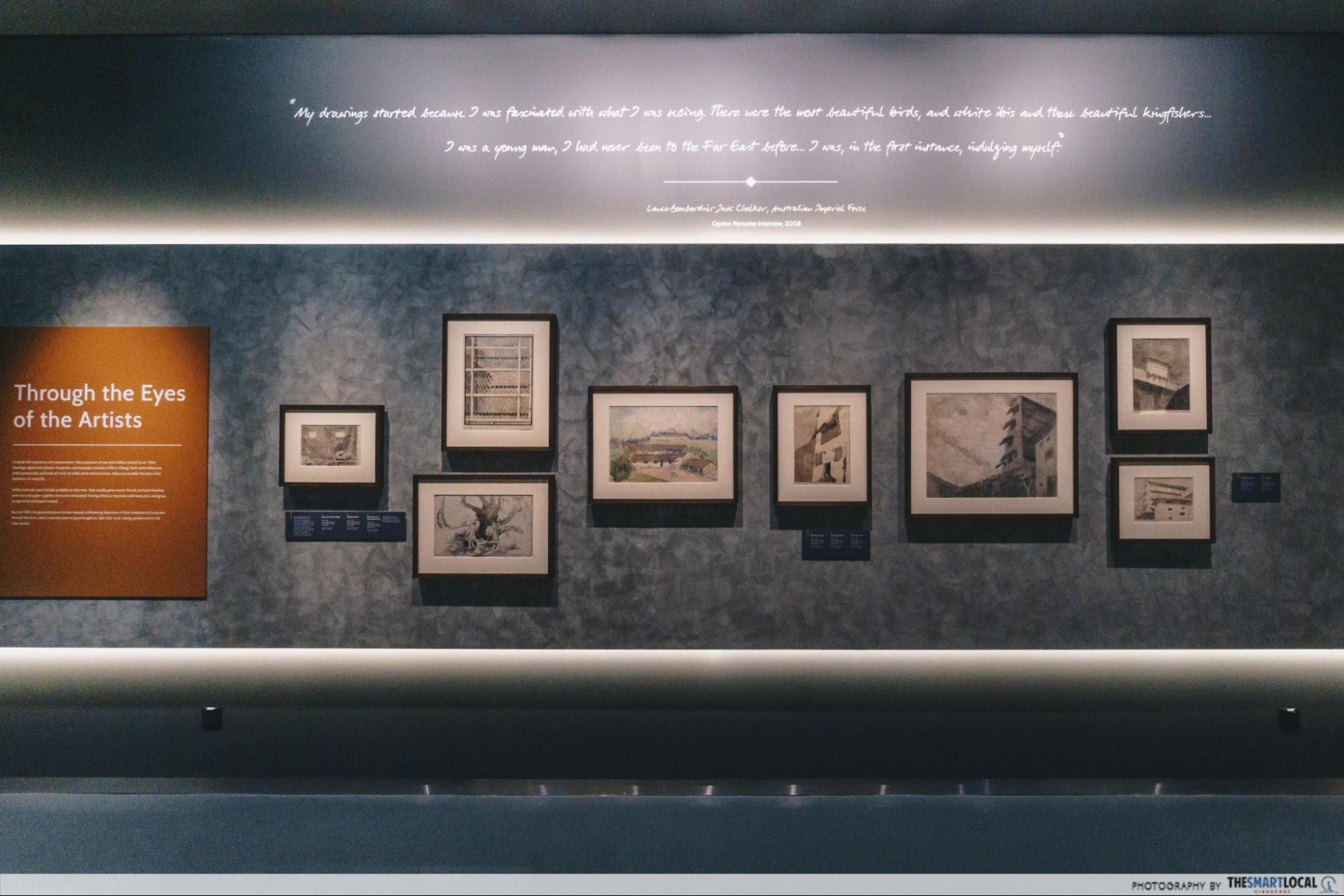 Watercolour paintings that depict everyday prison life by Mary Angela Bateman.
Watercolour paintings that depict everyday prison life by Mary Angela Bateman.
Unexpectedly, creative expression also flourished in the confines of prison camp.
The internees did arts and craft, produced concerts and plays complete with set design, and even had writing competitions. There was even hearsay that those involved in plays were so important that they were not sent as slave labour on the Thai-Burma Railway AKA the Death Railway.
Digital displays for an interactive experience
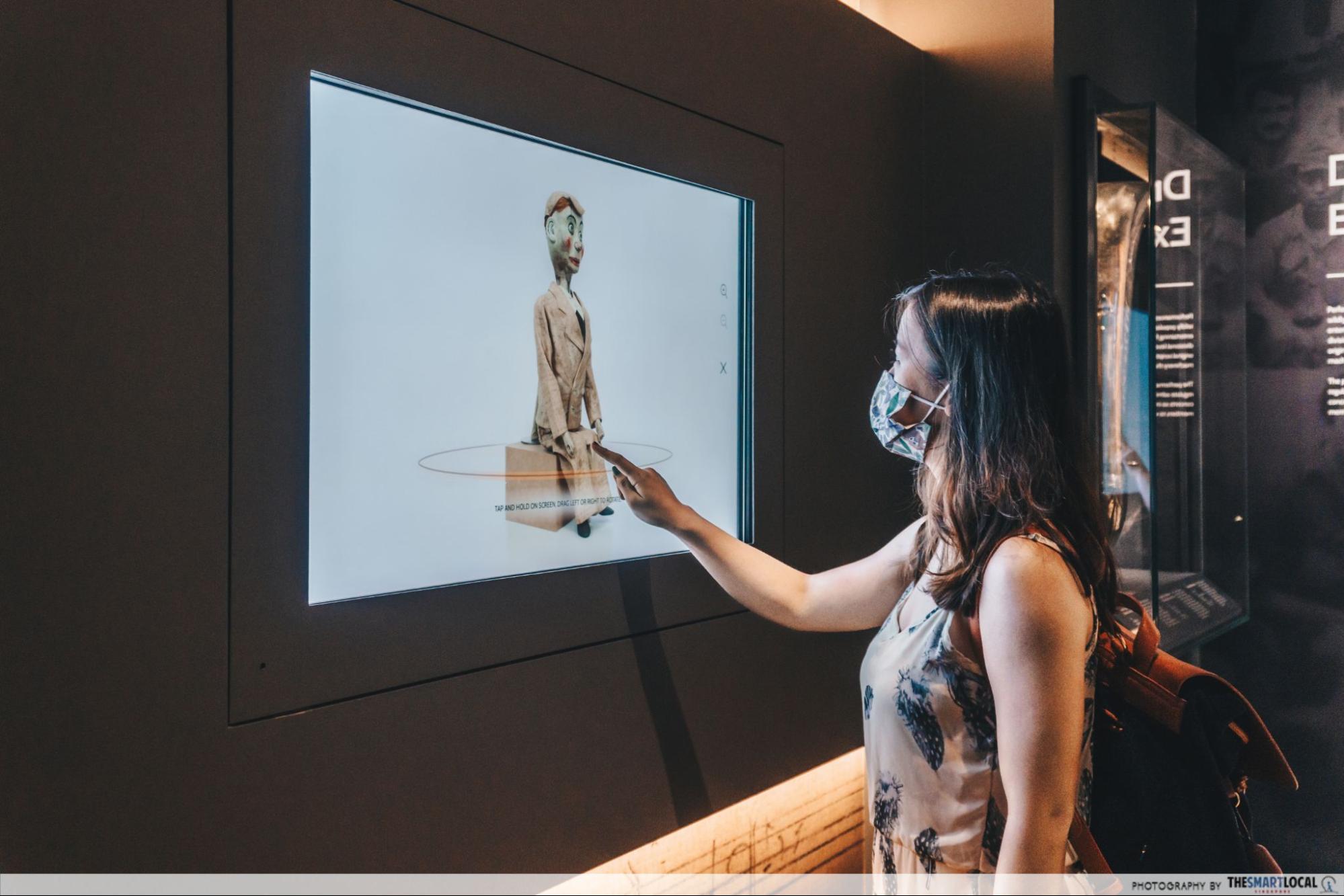
If you think the museum is a staid one frozen in time, the many digital displays will prove you wrong, letting you interact with the exhibits in an immersive way.
For instance, we could take a digital 360-degree look at Joey the Ventriloquist Doll, a wooden puppet fashioned impressively within the prison camp itself.
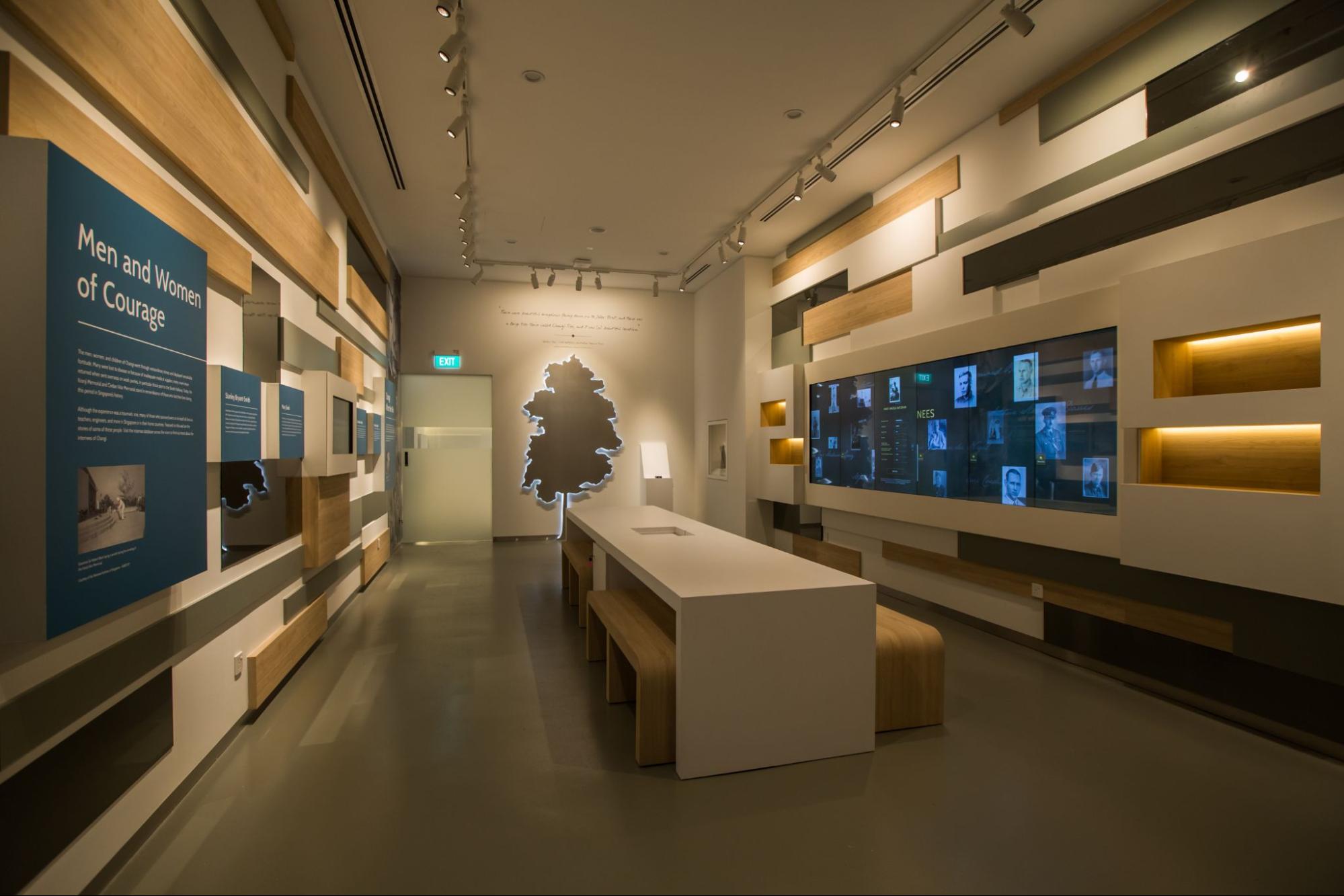 Image credit: Changi Chapel and Museum
Image credit: Changi Chapel and Museum
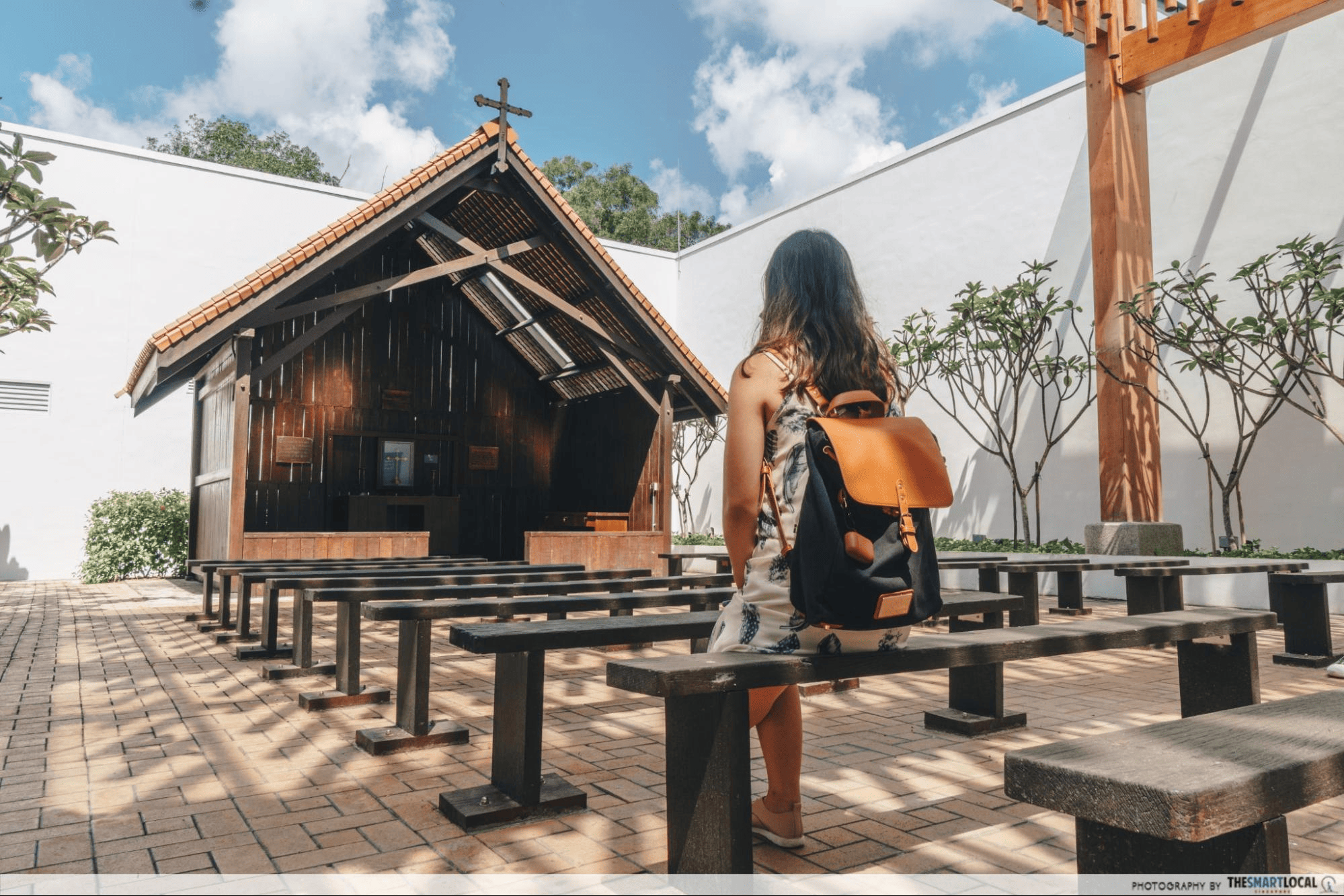
It was utterly serene, almost otherworldly, and in that silence it dawned on me how tough it was for the prisoners of the time to survive – and even thrive – in the face of such devastating adversity.
Free public & robot-guided tours
If you want a more in-depth look at the exhibits, the museum offers free public guided tours in English and Mandarin. You’ll just need to register online at least 5 working days in advance for an appointment.
Register for the free public guided tours at Changi Chapel & Museum.
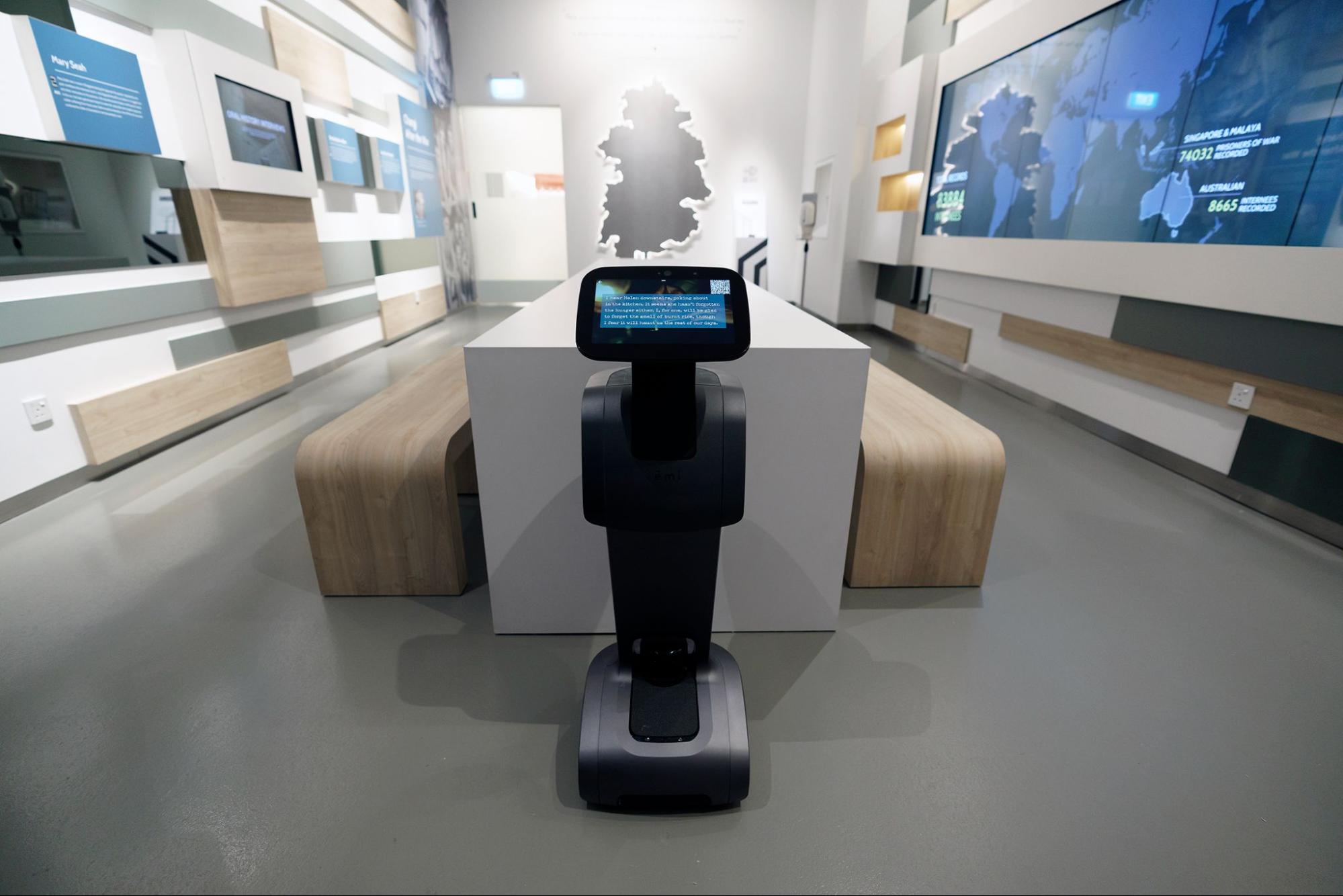 Image credit: Changi Chapel and Museum
Image credit: Changi Chapel and Museum
The topic of WWII can be quite heavy, even for adults, so those with children might want to book the Temi tours instead. Temi is an interactive robot who roleplays as a soldier internee and will accompany you on your visit through the museum.
Temi-Guided Tours
Tour timings: Tue-Thu 10am-4pm | Fri 12pm-4pm
Step into history at the Changi Chapel & Museum
Despite the museum’s relatively small size, I walked away with a deepened understanding of our WWII past and the challenges the prisoners faced back then. It was a glimpse into a side of Singapore that not many of us have slowed down to contemplate, and was well worth the journey to the Far East.
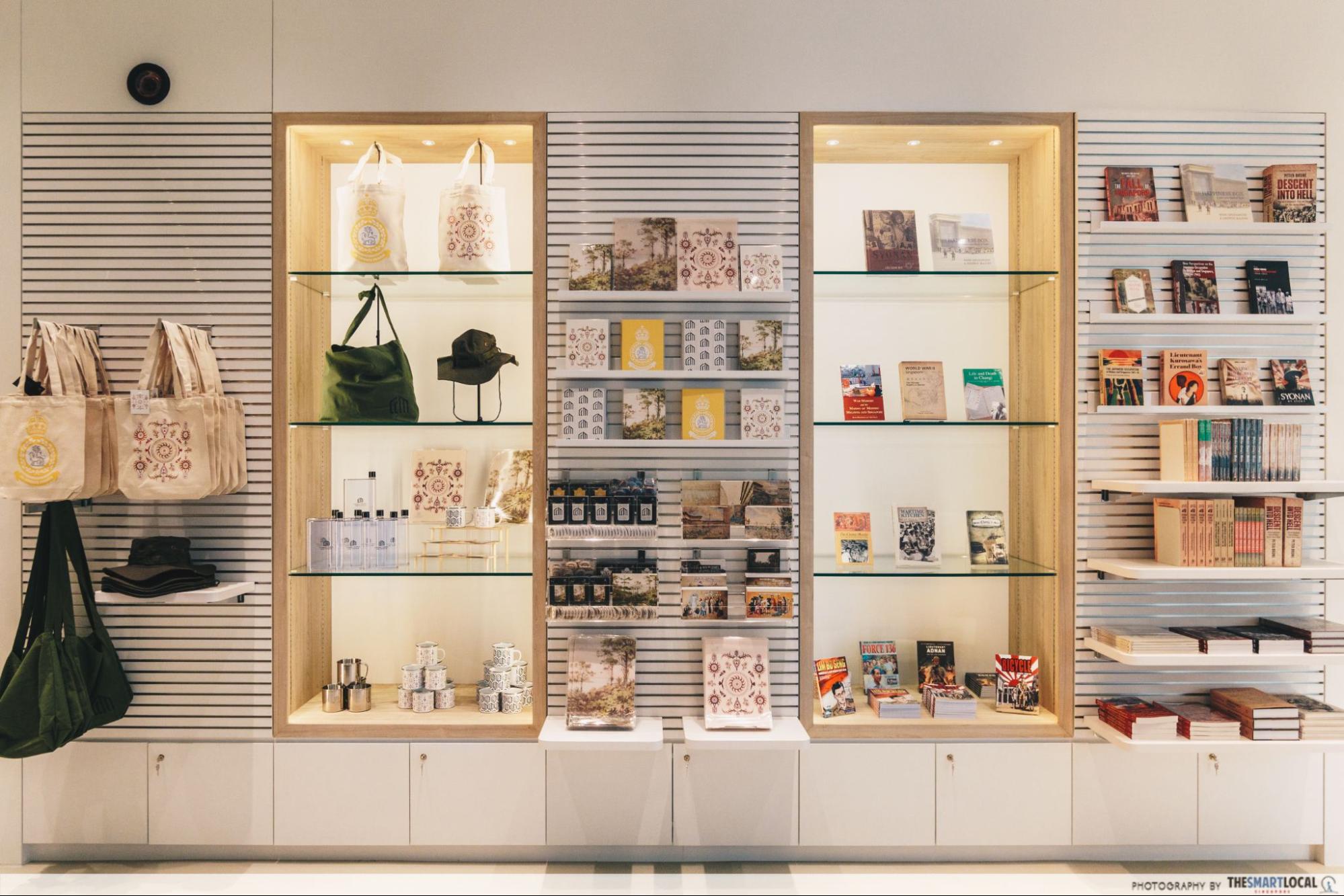 There’s also a museum shop (above) and in-house F&B outlet, The Bark Cafe, to round up your experience here.
There’s also a museum shop (above) and in-house F&B outlet, The Bark Cafe, to round up your experience here.
What is unique about the Changi Chapel & Museum?
It’s one of the few museums that focuses on the daily lives of prisoners of war (POW) during the Japanese Occupation in WWII.
When was Changi Chapel & Museum opened?
It first opened on 15th February 2021. The date will be familiar with history buffs as the anniversary of the surrender of Singapore to the Japanese during WWII.
Why was the Changi Chapel built?
The original Changi Chapel was built at the Changi Prisoner of War Camp in 1944 by the internees as a place of worship.
Rates:
Singaporeans, PRs, and children 6 years and below: Free
Adults: $8/pax
Seniors: $5/pax
Address: 1000 Upper Changi Road North, Singapore 507707
Opening hours: Tue-Sun, 9.30am-5.30pm (Closed on Mondays)
Contact: 6242 6033 | Changi Chapel Museum website
Photography by Kenneth Chan.
Originally published on 14th May 2021. Last updated by Shivani Anne Supramani on 14th October 2023.
